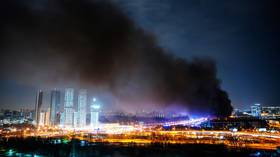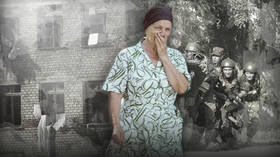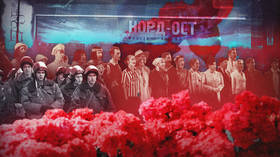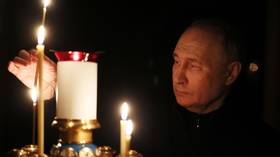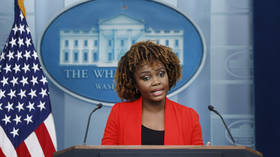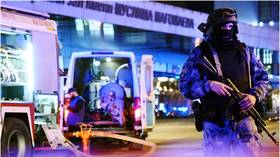‘We’ll wipe them out in the outhouse’: Russia’s long and bloody fight against terrorism
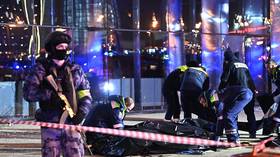
Last week, terrorists opened fire on concert goers before a show by the band Picnic at Moscow's Crocus City Hall. As a result of the attack, a fire started which spread to an area of 13,000 square meters and wasn't extinguished until the next evening. 143 people were killed and 182 injured. Russia’s Federal Security Service (FSB) has reported the arrest of 11 suspects, most of whom have already been brought to court.
It was the deadliest act of terrorism in Russia for the past 20 years. In recent decades, the country has suffered from both small-scale (but no less tragic) terrorist acts – which are not well known internationally – and major tragedies which have resulted in many deaths. They have taken place both in Moscow and other regions of the country.
How terror gripped Russia
Most of the terrorist attacks in Russia’s modern history have been organized by extremists associated with radical Islamic movements.
After the collapse of the USSR, in 1991, Chechen radicals carried out several major outrages. The following year, bus passengers were taken hostage in the southern town of Mineralnye Vody. In 1993-94, other attacks followed. A train going from Kislovodsk to Baku was blown up near the Gudermes train station in Chechnya (11 people were killed and 18 injured). There were other incidents of train bombings and bus passengers being taken hostage. On May 26, 1994, 33 passengers (schoolchildren, their parents, and teachers) on a bus traveling from Vladikavkaz to Stavropol were taken captive, and on July 28, a bus with 41 passengers was hijacked in Mineralnye Vody. In the same years, terrorists set off explosive devices near residential buildings in Moscow (two people died), Novgorod (one person injured), Ekaterinburg (two people were injured), and in other places. On September 7, 1994, seven people died and 44 were injured as a result of an explosion in Moscow.
The First Chechen War started in December 1994. During the years of the conflict, attacks became common and the terrorists often used them for manipulation purposes during negotiations. To achieve their goals, they usually took hostages.
From January 9-15, 1996, an armed group led by Salman Raduyev took around 2,000 people captive in a hospital and maternity ward in the city of Kizlyar, Dagestan. Following negotiations, most of the hostages were released. However, the terrorists took some with them and fled in the direction of Chechnya. They were blocked by Russian troops near the village of Pervomayskoye, but managed to escape at night. In the course of the attack, 37 people were killed and over 50 others were injured. Raduyev and other terrorists managed to escape. The terrorist act in Kizlyar killed a total of 78 people, including Dagestani servicemen, policemen, and civilians. A few years later, Raduyev was arrested and sentenced to life in prison, where he eventually died.
The tragedy in Budyonnovsk and the end of the First Chechen War
The biggest terrorist attack of the 1990s, during which over 1,500 hostages were taken, happened in the city of Budyonnovsk, near the border with Chechnya.
On June 14, 1995, a group of 195 armed extremists led by terrorist Shamil Basayev, who organized several large-scale operations of this kind, attacked the city of Budyonnovsk. They used three military trucks and a police car to cross the border between Chechnya and Stavropol Region. At checkpoints, they disguised themselves as police officers and, saying they were transporting the bodies of servicemen, requested to pass without being searched. When they were eventually directed to the local police department, the extremists attacked the premises. They also seized several administrative and residential buildings, and took 1,586 hostages in the local hospital. They held the people for six days, demanding that the government withdraw federal troops from Chechnya and stop the disarmament of illegal terrorist groups.
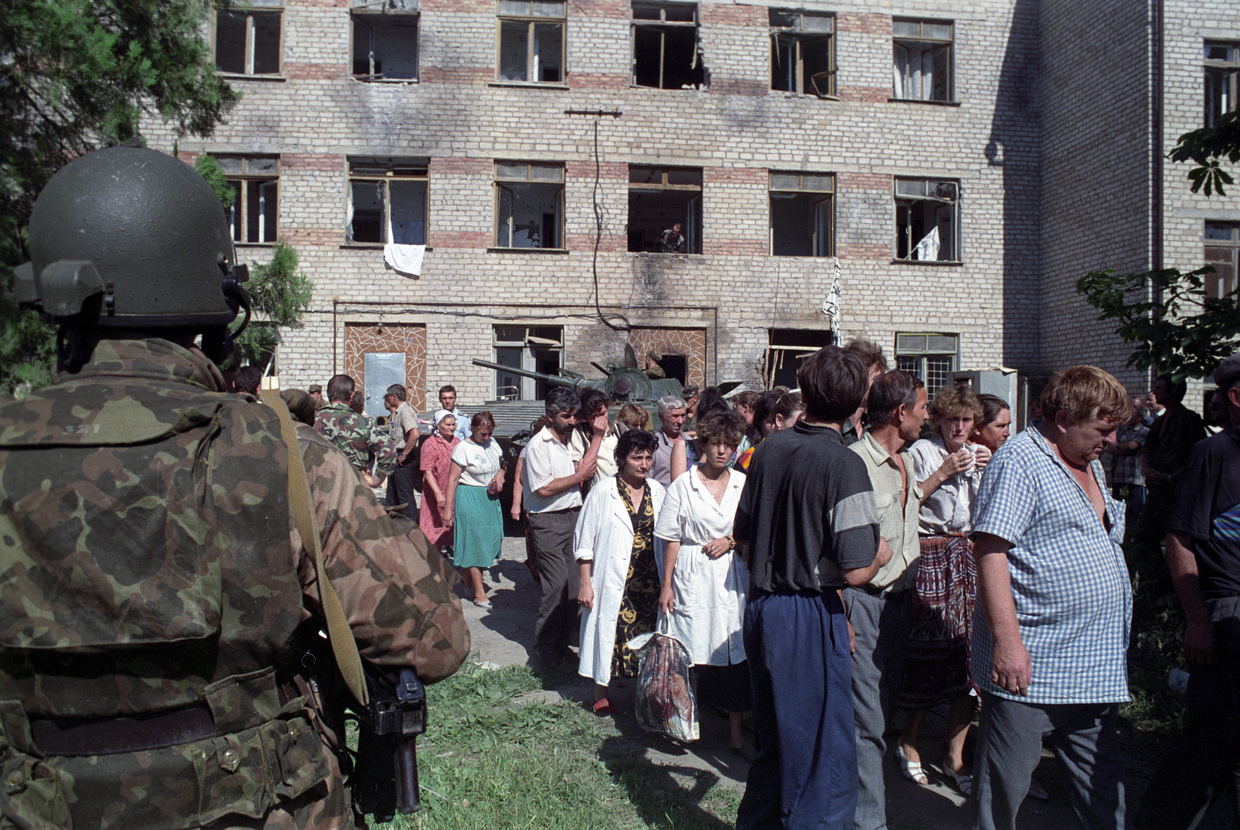
On June 17, negotiations with the terrorists started. They were conducted by Prime Minister Viktor Chernomyrdin on behalf of the Russian authorities. As a result of the negotiations, the terrorists were allowed to leave Budyonnovsk along with some hostages. On reaching Chechnya, the militants released the people and fled.
The terrorist leader responsible for this tragedy, Basayev, was eliminated during a special operation in 2006. Before that, he managed to carry out several more bloody attacks on Russian territory. By 2005, during the counterterrorism operation in Chechnya, 30 militants involved in the Budyonnovsk attack were killed, and by 2019, around 30 others were sentenced to long-term imprisonment. However, some of the militants are still at large.
The attack in Budyonnovsk killed 129 people (including 18 police officers and 17 servicemen) and injured 415 others. At least 30 people died and 70 were injured during the assault operation. In the course of the negotiations that followed, the authorities declared a moratorium on hostilities for an indefinite period.
However, this did not prevent future attacks. On July 11, 1996, Moscow was shaken by a metro explosion, which killed four people and injured 12 more. At the end of that year, another subway bombing took place in St. Petersburg.
In addition to these major tragedies, minor terrorist attacks continued and various cities were targeted. On July 11-12, two trolleybuses were bombed in Moscow, injuring over 30 people. Explosions also occurred in passenger trains in Voronezh, Volgograd Region, and other parts of the country.
The series of terrorist attacks, along with failures at the front (in August 1996, separatists captured the cities of Grozny, Gudermes, and Argun), accelerated Russia’s decision to cease the hostilities. On August 31, 1996, the Khasavyurt Accord was signed, which formally marked the end of the First Chechen War.
The ‘peaceful’ period
A couple of months after the signing of the peace agreement, terrorists struck again. This time, passenger trains were targeted, and on November 10, 1996, an attack was carried out at the Kotlyakovsky Cemetery in Moscow, which killed ten people and injured around 30.
On November 16, 1996, terrorists blew up a nine-story apartment building in Kaspiysk – a suburb of Makhachkala. Families of officers of the Russian Armed Forces’ 136th Motorized Rifle Brigade lived in the building. There were 64 victims, including 23 children, and around 150 people were injured and maimed.
The terrorist attacks continued in 1997-1998. Explosions occurred at train stations (April 23, 1997 in Armavir; April 28, 1997 in Pyatigorsk), and on locomotives (a July 27 explosion on the Moscow-St. Petersburg train killed five people and injured 13). On January 1, 1998, another explosion occurred in the Moscow subway, and on September 4, 18 people were killed and 91 injured in an explosion on a street in Makhachkala.
1999 was a particularly tough year for Russia. There were explosions on the streets of Moscow, St. Petersburg, and other cities. On March 19, 1999, the Central Market in the city of Vladikavkaz was bombed, killing 52 people and injuring 168 others. The perpetrator, Magomed Tsakiev, acted on the orders of Saudi terrorist Ibn al-Khattab. Tsakiev hid a bomb in a bag with potatoes and placed it under a metal counter in the busiest part of the market.
On August 7, 1999, Islamist militants invaded the Russian Republic of Dagestan, which led to the start of the Second Chechen War.
Explosions in residential buildings
On September 4, 1999, they blew up a truck containing a 2,700kg mixture of ammonium nitrate and aluminum powder. This happened near a five-story apartment building on Levanevsky Street in Buynaksk, Dagestan. 64 people were killed in the attack, including 23 children, and around 150 people were injured.
Terrorists then started carrying out deadly attacks in Moscow. At midnight on September 9, 1999, a terrible explosion occurred in a nine-story apartment building on Guryanov Street. Two entrances were left in ruins and the shock wave damaged a neighboring building. The power of the explosion was equivalent to about 350kg of TNT. The attack killed 106 people and left 200 wounded. In total, 690 were affected by the blast. The attack evoked a strong public response – people were shocked by the fact that an apartment block was blown up right in the middle of Russia’s capital.
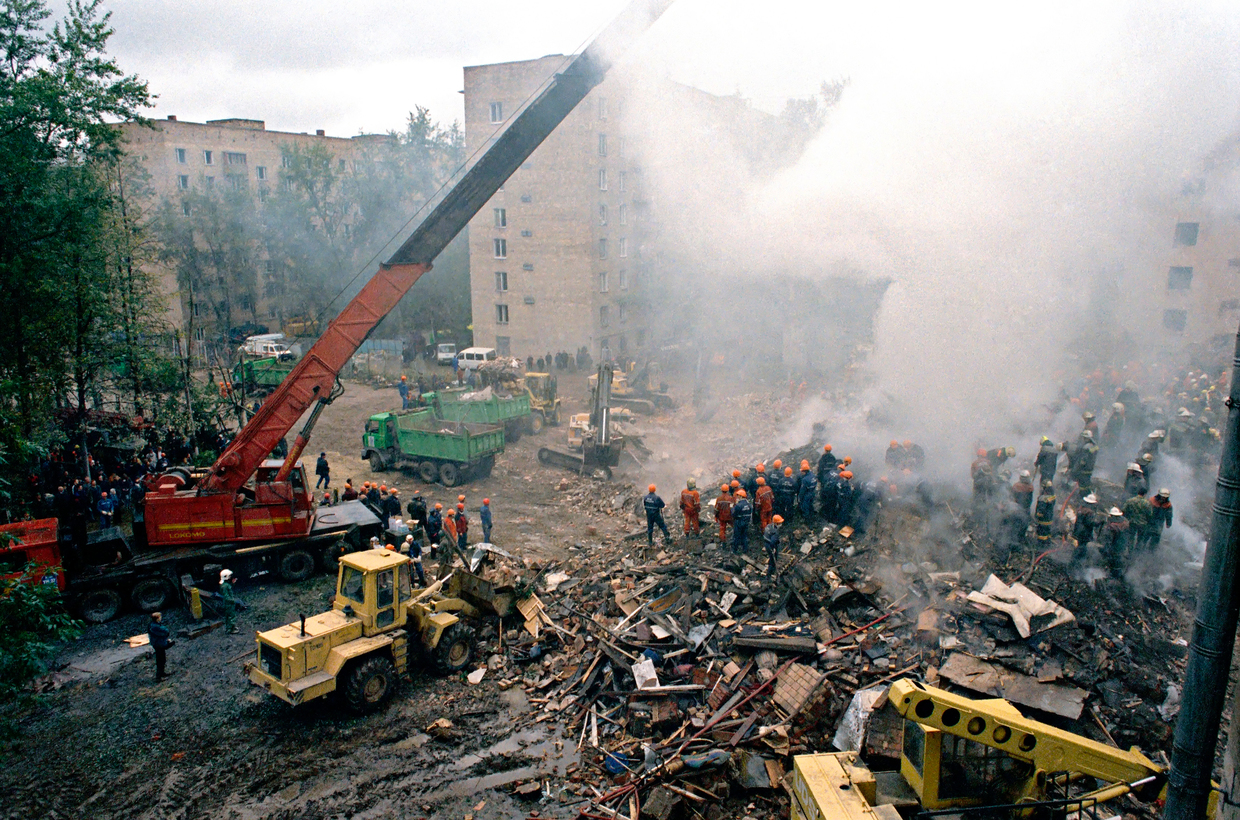
Just a few days later, on September 13, 1999, another explosion occurred in Moscow, in the basement of an eight-story apartment building on Kashirskoye Highway. The explosives were equivalent to 300kg of TNT. As a result of the attack, 124 civilians were killed and nine were injured.
This was followed by another tragedy. Early in the morning of September 16, 1999, a car bomb detonated in Volgodonsk in Rostov Region. Two buildings were seriously damaged and partially collapsed. The explosion knocked out windows and doors on nearby blocks, and cracks appeared in several neighboring buildings. The attack killed 19 people and injured 90.
That month, describing his counter terrorism strategy, then new Prime Minister Vladimir Putin delievered what has since become a famous statement:
We will chase terrorists everywhere. If in an airport, then in the airport. So if we find them in the toilet, excuse me, we’ll wipe them out in the outhouse. And that’s it, case closed”
The series of terrorist attacks on September 4-16 was organized and financed by al-Khattab and preacher Israil Akhmednabiyev (known as Abu Umar Sasitlinsky). They were responsible for many large-scale outrages. Al-Khattab was eliminated in 2002, but Sasitlinsky resides outside of Russia, and in 2023, Interpol removed him from the international wanted list.
These horrible terrorist attacks on residential buildings, which did not involve suicide bombers or militants but nevertheless took the lives of hundreds of civilians, made a strong impression on Russian society.
Nord-Ost
The biggest tragedy of the beginning of the new millennium was the ‘Nord-Ost’ terrorist attack and hostage seizure in Moscow. On the evening of October 23, the eponymous musical was being performed at Moscow’s Dubrovka Theater. At around 9:05pm, three microbuses with 40 armed terrorists led by Movsar Barayev drove up to the location. They arrived on the orders of the infamous terrorist leader Shamil Basayev. They broke in, blocked the exits, and took 916 people hostage (performers, theater staff, and audience members), including 100 children.
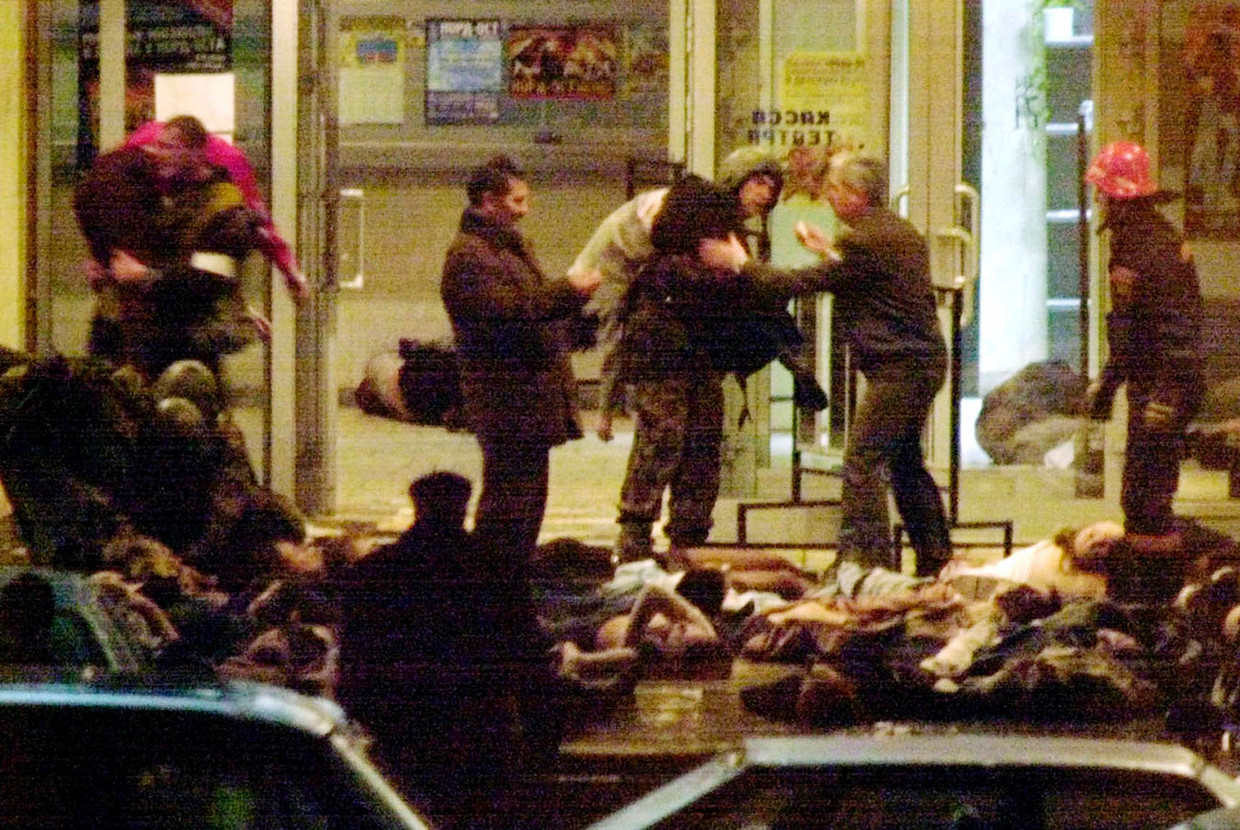
From October 23-25, the hostages were locked up in the building in unbearable conditions. However, thanks to the efforts of negotiators, around 60 prisoners were released. Finally, on October 26, FSB special forces conducted an emergency operation to free the hostages. The operation was extremely difficult and in the course of it, all the terrorists were killed.
As a result of the Dubrovka Theater attack, 130 hostages were killed – five were shot by the terrorists before the building was stormed by special forces, and the rest died during the operation or as a result of injuries.
Just like in the case of the Nord-Ost and Crocus City Hall tragedies, terrorists targeted another musical event on July 5, 2003. Two explosions occurred during a popular rock festival in Moscow; 16 people were killed, including two women – the suicide bombers, Zulikhan Elihadzhieva and Maryam Sharipova. 57 people were also injured.
More bloodshed
In 2002, extremists organized several more deadly attacks. On May 9, an explosion occurred in Kaspiysk during WWII Victory Day celebrations. A bomb killed 43 people and injured about 120. Terrorist Rappani Khalilov was held responsible for the explosion. He was eliminated in Dagestan in 2007.
On December 27, 2002, two cars were blown up by suicide bombers in the yard of the Government House in Grozny, Chechnya. 71 people were killed and 640 were wounded in the attack.
On May 12, 2003, a female suicide bomber blew up a truck loaded with explosives near buildings of the local administration and the FSB in the village of Znamenskoye, Chechnya. 60 people died and 197 others were injured. The victims included policemen, FSB officers, and civilians (including eight children). Some residential buildings also suffered damage. In June 2003, the organizer of these attacks, Chechen terrorist field commander Khozh-Akhmed Dushaev, was killed.
On September 3, 2003, two explosive devices detonated under the car of a train traveling from Kislovodsk to Mineralnye Vody, killing seven people and injuring 92. The tragedy was repeated on a train which was traveling along the same route on December 5, 2003. A suicide bomber set off an explosive device equivalent to 7kg of TNT. As a result of the explosion, 47 people were killed and 186 were injured. Chechen terrorists claimed responsibility for the attacks.
The terrorists also targeted commuters. At 8:30am on February 6, 2004, an bomb went off on the Moscow subway, between the Avtozavodskaya and Paveletskaya stations. Anzor Izhaev set off a bomb in his backpack. The explosion was so powerful that many of the dead were identified only through DNA testing, and the neighboring metro car was completely destroyed. 41 people were killed (not counting the terrorist) and 250 injured.
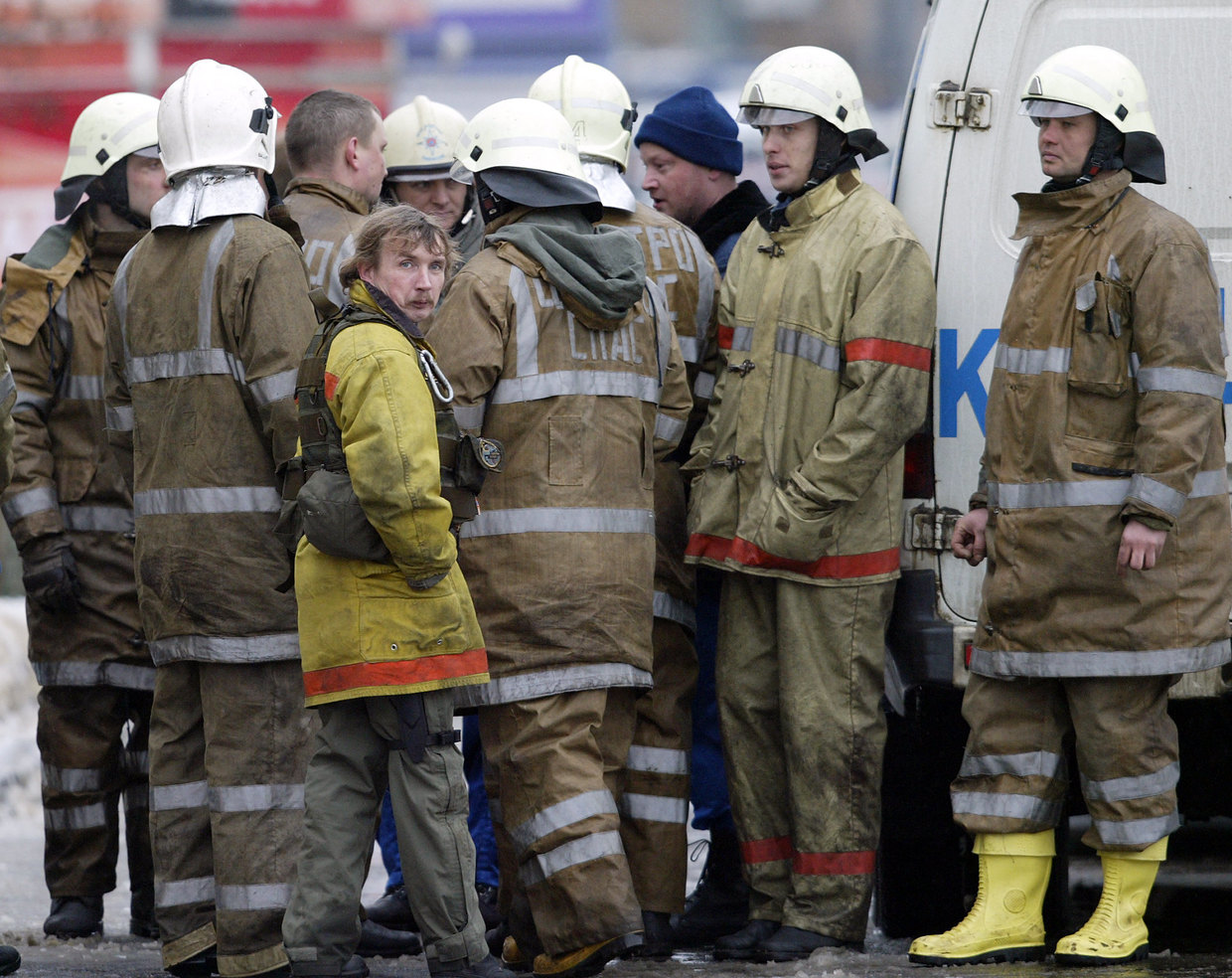
The organizers and perpetrators of the attack were members of the Wahhabi group Jamaat of the Mujahideen of Karachai.
Air terrorism was also a problem. On August 24, 2004, two passenger airplanes exploded almost simultaneously over Tula and Rostov Regions. The Volga-Aviaexpress and Siberia Airlines flights were on the way from Moscow’s Domodedovo Airport to Volgograd and Sochi, respectively. 89 people were victims of this double attack. Both bombs were set off by female suicide bombers aboard the planes. The sister of one of the terrorists was involved in the Beslan school siege which happened just a few days later. Shamil Basayev claimed responsibility for both the explosions and the school attack.
August 2004 was a particularly deadly month. Several days after the airplane tragedies, another terrorist attack occurred in Moscow. On August 31, 2004, a suicide bomber killed ten and injured over 50 people at the entrance to Rizhskaya subway station. And the tragedy in Beslan occurred the very next day.
Beslan
On September 1, 2004, during celebrations of the first day of the school year, a group of terrorists headed by Ruslan Khuchbarov (known as the ‘Colonel’) occupied Beslan’s School No. 1 and captured over 1,100 hostages including students, their relatives, and teachers. The school building was mined. For almost three days, the militants held the hostages in the gym, denying them access to food, water, and use of the restrooms. Among the hostages, there were mothers with newborn children.
Thanks to negotiations with Ruslan Aushev – the former president of Ingushetia and the only person who the terrorists allowed to enter the building – 26 women and children were freed on September 2. The next day, it was agreed that the bodies of the hostages who had been shot by the terrorists would be taken out of the building.
Around noon on September 3, the Ministry of Emergency Situations arrived at the school to collect the bodies. At that exact time, several explosions occurred in the building. Special forces had launched an emergency operation. Some of the hostages managed to escape through the windows and a gap in the wall that formed as a result of the explosion. The remainder were taken by the terrorists to another part of the school. Fighting continued late into the night.
The attack in Beslan claimed the lives of 334 people, including 186 children, 17 teachers and school staff, ten FSB employees, and two rescue workers.
All of the extremists except for Nurpasha Kulaev were killed. Kulaev was sentenced to death, but due to a moratorium, the verdict was changed to life imprisonment. Basayev claimed responsibility for the attack.
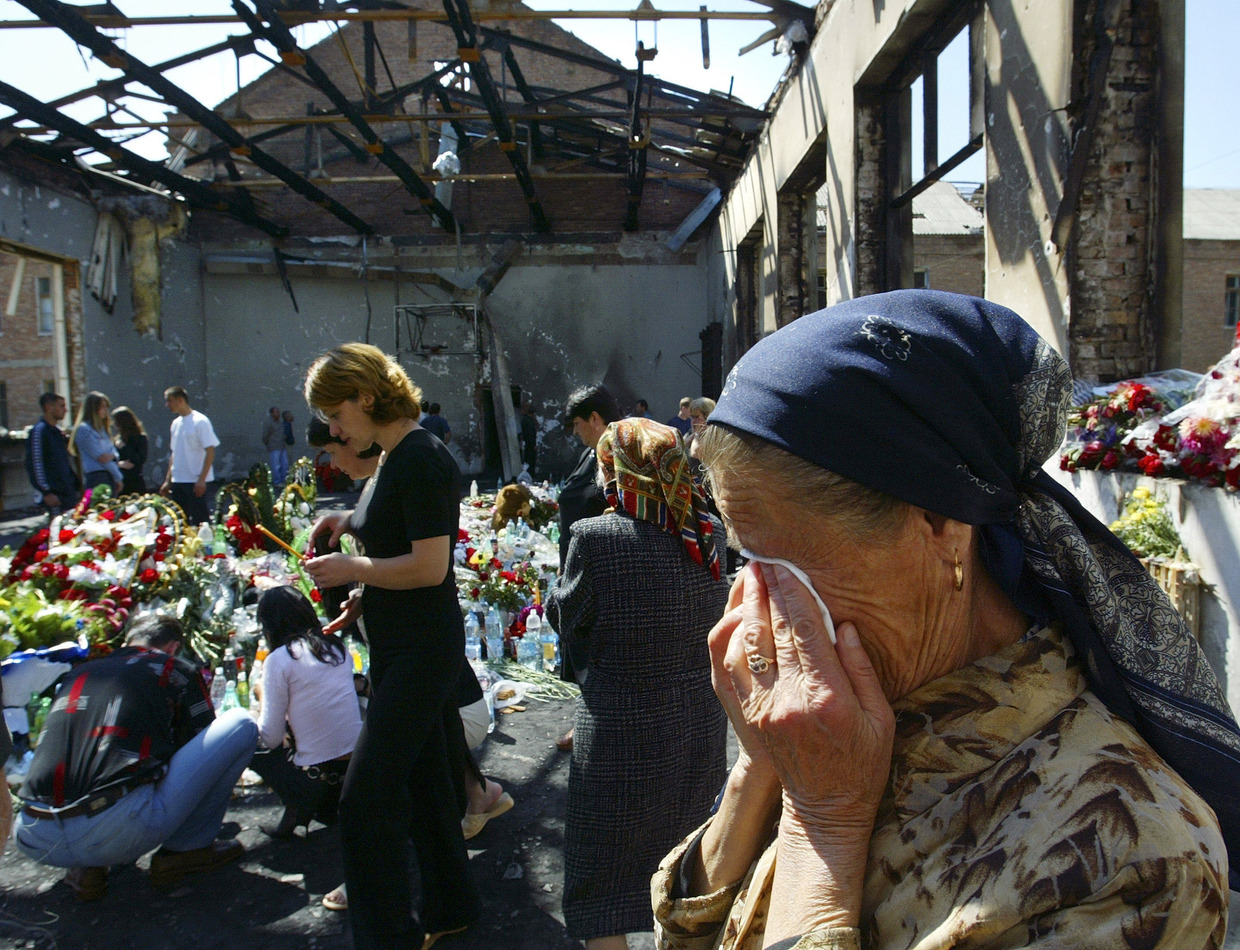
The end of the Second Chechen War
In addition to these major tragedies, many lesser-known terrorist attacks took place from 2000 to 2006. They ranged from explosions in the subway (Moscow, 2001) to attacks that resulted in mass casualties (Mineralnye Vody, 2001: 21 people died, about 100 were injured; Vladikavkaz, 2002: nine died, 46 were injured). There were also incidents with bus passengers being taken hostage (Nevinnomyssk, 2001), explosions in buses (Grozny, 2003) and on trains (an bomb on the Kislovodsk–Mineralnye Vody train, in which seven people died and about 80 were injured; a train explosion in Stavropol Region, near Essentuki, in 2004: 44 people died, 156 were injured), and suicide bombings in crowded places (in Krasnodar, an explosion at a bus stop on August 25, 2003; Chechnya, a bomb at a celebration on May 14, 2003: 30 people died, more than 150 were injured).
Attacks on politicians (on May 9, 2004, terrorists killed the leader of Chechnya, Akhmad Kadyrov, and the chairman of the Chechen State Council, Hussein Isaev), police officers, and the military, as well as smaller explosions that claimed the lives of civilians, also occurred regularly.
The Second Chechen War ended on April 16, 2009. Nevertheless, the terrorist attacks continued.
The last attacks by Caucasian terrorists
On November 27, 2009, three cars of the Nevsky Express high-speed train traveling from Moscow to St. Petersburg derailed due to an explosion, killing 28 people and injuring over 130. The next day, a second bomb went off at the scene of the tragedy. It happened near the investigation scene and it was activated via mobile phone. Seven individuals that were part of illegal armed groups were found guilty of the terrorist act and were killed in Ingushetia in the course of fighting on March 2, 2010. Ten others were imprisoned.
On the morning of March 29, 2010, a new double tragedy took place in Moscow. Terrorist attacks were launched at the Lubyanka and Park Kultury subway stations. Both explosions were carried out by female suicide bombers and happened within an hour of each other. The total number of victims was 44, and 88 were injured.
Chechen terrorist leader Doku Umarov claimed responsibility for the attacks. In 2006, he claimed to be president of the unrecognized republic of Ichkeria, and in 2007, Umarov created the Caucasus Emirate jihadist organization and became its supreme leader.
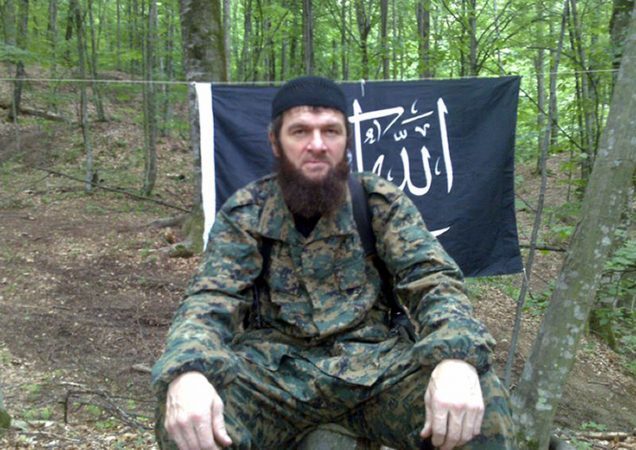
On January 24, 2011, another tragic terrorist act was carried out by Umarov’s Chechen terrorists. A suicide bomber blew himself up in a crowd at Moscow’s Domodedovo Airport, the second largest in Russia. As a result, 37 people were killed and more than 170 were injured. Several perpetrators were arrested and imprisoned.
Throughout these years, extremists carried out other attacks that claimed many lives.
On August 27, 2010, over 40 people were injured as a result of an explosion in Pyatigorsk, and on September 9, 2010, a terrorist attack in Vladikavkaz killed 17 people and injured 158 more.
In 2013, Umarov was eliminated.
This marked the end of terrorist acts organized by radical Caucasian and Islamist militant organizations in the aftermath of the Chechen wars.
New attacks by Islamist extremists
The deaths or arrests of many Islamic radicals and their leaders, as well as changes in the international situation have influenced terrorist activity in Russia. Following the death of Umarov and a number of other commanders, the Caucasus Emirate terrorist organization broke up and was dissolved. As a result, many Islamists swore allegiance to Islamic State (IS, formerly ISIS).
Extremists linked to IS have conducted a number of terrorist attacks in Russia over the past decades. One of the worst episodes was a series of attacks in Volgograd in 2013. On October 21, a female suicide bomber blew up a bus, killing seven people and injuring 37 others. On December 29, an explosion at a railway station claimed the lives of 18 people and the very next day, on December 30, a terrorist attack in a trolleybus killed 16 people and wounded 25.
On October 31, 2015, an Airbus 321 (A321) belonging to the Russian airline Metrojet crashed in the north of the Sinai Peninsula, 100 kilometers from the Egyptian city of El Arish. Flight No. 9268 was on the way from Sharm el-Sheikh to St. Petersburg. The crash killed all 224 people on board, including 25 children.
The tragedy was caused by an explosive device aboard the plane, which was hidden by an Egyptian airport service employee. The Sinai branch of IS claimed responsibility for the attack in the days following the disaster.
Russia’s second largest city, St. Petersburg, has also suffered from terrorist attacks. On April 3, 2017, an explosion occurred in the subway, between the Sennaya Ploshchad and Technological Institute stations. As a result, 16 people were killed (including the terrorist) and 67 injured. The attack was carried out by suicide bomber Akbarjon Jalilov. 11 people were charged with preparing the attack and all of them were sentenced to long-term imprisonment.
In the course of Russia’s modern history, terrorists have carried out a considerable number of attacks on innocent civilians. Among the targets have been passenger planes and trains, schools, residential buildings, and places where large crowds gather, such as airports, concert halls, and music festivals.
We have mentioned only some of the attacks organized by terrorists over the past 30 years. In each case, the authorities had to promptly respond and seek out the perpetrators. And although Russia has gained considerable experience in counterterrorism measures, unfortunately, the threat of terrorism has not become a thing of the past.
